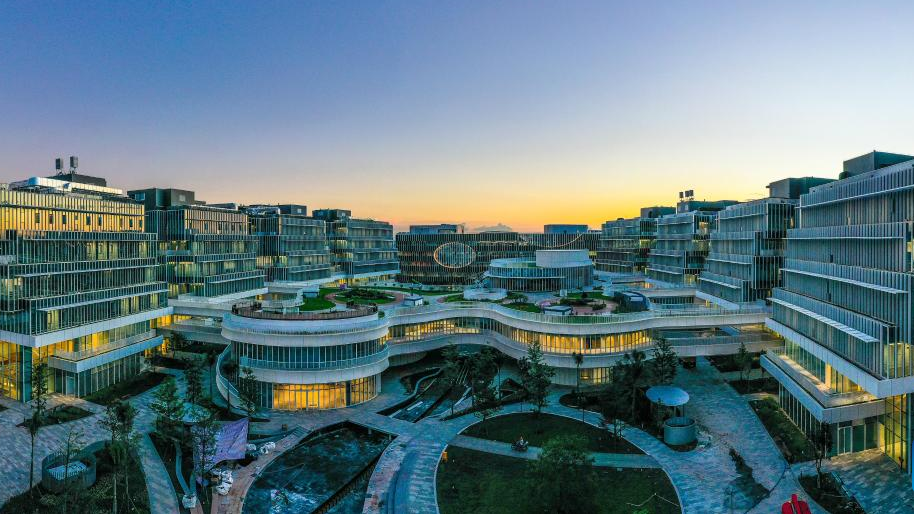COVID resurgence spirals to highest in 3 months
The recent wave of COVID-19 resurgence in China driven by Omicron variants has been fermenting for about a month, and the daily tally reached its highest level in about three months with a total of 3,424 new cases being reported on Thursday.
Experts stressed such a high daily increase should not be a cause for panic as it is a result of multiple factors such as an influx of tourists in the summer peak season. With sticking to the dynamic zero-COVID policy, this wave of flare-ups is expected to be controlled in a quick manner.
Despite widespread outbreaks, experts generally believe there won't be a hard landing for the Chinese economy this year since the fundamentals have not changed, shrugging off some voices that bad-mouth China's economy as the country strives to combat the coronavirus.
China registered 3,424 new daily cases on Wednesday, with 614 confirmed and 2,810 asymptomatic cases, marking the highest daily increase in the past 90 days. The daily new cases reported by the National Health Commission (NHC) showed that on Thursday, 25 provincial-level regions in the country are suffering from the epidemic at present.
Hainan is still the province that recorded the highest number of daily cases on Thursday, with 496 confirmed and 1,522 asymptomatic cases being registered. Since August 1, the island has seen 13,763 cases.
Such a continuous fight against COVID-19 triggered some to voice concerns whether Hainan would become the next Shanghai, which was once locked down for months.
Lu Hongzhou, head of the Third People's Hospital of Shenzhen and an experienced Chinese doctor in combating the COVID-19 epidemic, gave a clear-cut answer - "no" - as he said the tricky question for Hainan was the insufficient nucleic acid testing capability, but once national aid was in place, it could shore up the weak spots.
Local health officials from the province also delivered good news at Thursday's press conference, saying that new cases screened out from communities had seen a continuous decline, and the outbreaks in Hainan were generally controllable.
So far, the province has set up 12 makeshift hospitals consisting of more than 22,200 beds to receive COVID-19 cases.
The noteworthy COVID-19 situation on Thursday was the spillover cases coming from epidemic-hit areas into multiple other places across the nation.
Xining city in Northwest China's Qinghai Province reported on Thursday four new asymptomatic infections among people coming from Southwest China's Xizang (Tibet) Autonomous Region, who had been placed under quarantine upon arrival.
Apart from Qinghai, Xiamen city in East China's Fujian Province has reported at least 28 cases related to Xizang, and three counties in the province have reported cases with a history of living or traveling in Xizang.
At least six provinces or municipalities - Qinghai, Central China's Hubei and Hunan, and East China's Fujian, Zhejiang and Shanghai - have reported infections among people who had a travel history involving Xizang.
The risk of spillover cases from Xizang to other provinces has been increasing as the summer vacation travel reaches its peak. On Tuesday, the Xizang regional epidemic prevention and control authority ordered measures to resolutely prevent the epidemic from Xizang spilling over to other provinces through passenger flights. Passengers departing Xizang have to present two negative nucleic acid test results obtained within three days, green health codes and negative results for antigen tests obtained at the airport.
Lu assured that the recent new daily case surge should not be a cause for panic, as the rocketing cases were a result of multiple natural factors. Heavy flows of the population in the summer tourism peak season and the high risk of imported cases from neighboring countries as well as the extremely contagious Omicron variants - all these factors have contributed to the recent surge of COVID-19 in the country, Lu said.
Lu told the Global Times that sticking to the current dynamic zero-COVID policy is essential as the global epidemic has yet to be over, dismissing some voices in the West doubting China's anti-epidemic efforts and commenting on them in sarcastic tones.
The COVID-19 resurgence has dealt a certain blow to some tourism markets such as those in Xizang, Xinjiang and Hainan, and triggered a series of anti-epidemic measures that may affect the economic recovery in a certain way, such as cities imposing static management and suspending transportation and the operation of some businesses.
Amid the wide spread of COVID-19, Chinese Premier Li Keqiang on Tuesday told leading officials from six major economic provinces- Guangdong, Jiangsu, Zhejiang, Shandong, Henan and Sichuan - to make efforts to meet their due responsibilities on consolidating the economic recovery.
Cao Heping, an economist from Peking University, told the Global Times that the Chinese government and consumers have already learned to deal with flare-ups during the fight against COVID-19 over the past two and a half years, and the economic recovery in the second half of the year is not a big problem with the confidence they hold, as long as no large-scale lockdowns like those in Shanghai and Wuhan are launched.
The impact of sporadic cases in some provinces during the summer vacation travel season is limited. Only the travel sector will be affected, which will not have a huge impact on consumers' confidence, Cao said.
Despite the difficulties, there won't be a hard landing for the Chinese economy, since the fundamentals of the Chinese economy have not changed, observers said, expressing their confidence that the GDP growth would meet the target in the latter part of the year.
Since the six provinces mentioned above hold leading positions on industry chains, it is expected that their demonstration and leading effect can drive the national economy, which requires them to accomplish their full-year goals and strive to meet their targets for the year, economic observers said.
Photos
Related Stories
Copyright © 2022 People's Daily Online. All Rights Reserved.









